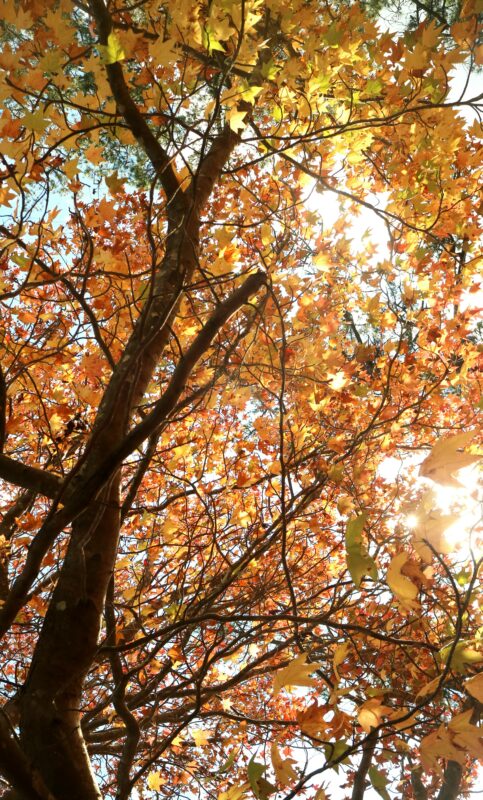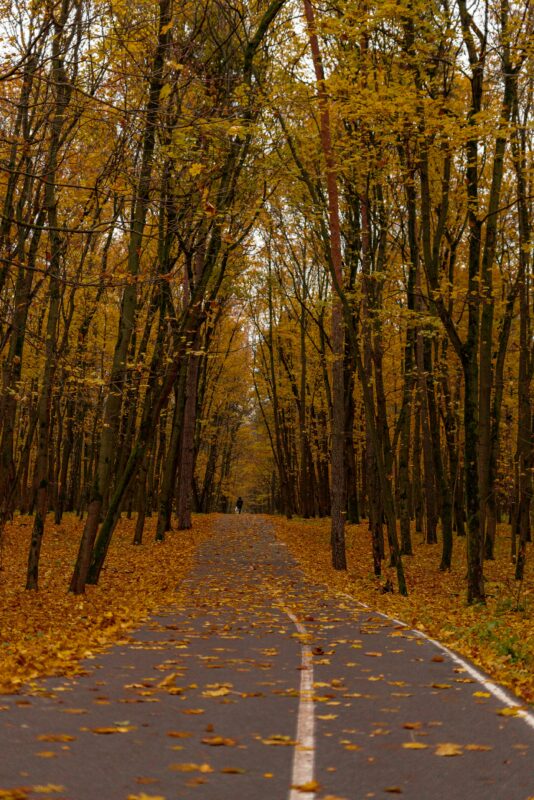
Norway Maple tree vs Sugar Maple.
Native Sugar Maples (Acer saccharum) and invasive Norway Maples (Acer platanoides) can seem similar at first, but there are key differences. Identifying these differences is important for preserving native ecosystems. Here’s how to tell them apart:
1. Leaf Shape and Texture
- Sugar Maple: The leaves have five distinct lobes with rounded spaces (sinuses) between them. The leaf surface is smooth with a delicate texture.
- Norway Maple: The leaves also have five to seven lobes. However, the spaces between the lobes are more angular, with sharper points. The leaf surface is thicker and more leathery, making it easy to distinguish from the smoother Sugar Maple.
2. Leaf Color of Norway Maples is uneventful.
- Sugar Maple: In the fall, the leaves turn vibrant shades of orange, red, and yellow. These bright colors are a hallmark of the species.
- Norway Maple: In contrast, Acer platanoides leaves turn a dull yellow in fall, lacking the vibrant reds and oranges typical of the Sugar Maple. (Of course, the exception is the Crimson King Norway cultivar. Which certainly can get confused with the native Red Maple.)

3. Norway Sap is Milky.
- Sugar Maple: When a leaf or twig breaks, there is little to no sap. Sugar Maples are known for their sap, which is used to produce maple syrup in early spring.
- Norway Maple: However, Acer platanoides produce a milky white sap when a leaf or twig is broken, a characteristic not found in Sugar Maples.
4. Seeds (Samaras)
- Sugar Maple: The winged seeds, known as samaras, form a “U” shape and fall in late summer. This distinct shape helps to differentiate them from Norway Maples.
- Norway Maple: The samaras of Norway Maple form a wider angle, almost straight across like a “T.” Norway Maples also produce more seeds, which aids in their spread as an invasive species.
5. Young Norway Maples have Smoother Bark.
- Sugar Maple: The bark is grayish-brown and soon develops long, vertical ridges as the tree matures.
- Norway Maple: Norway Maple bark is also grayish but remains smoother for a longer time compared to Sugar Maple bark, which develops deeper furrows earlier in life.
6. Norway Maple’s Shade Tolerance is unparallel.
- Sugar Maple: While Sugar Maples can tolerate some shade, they thrive in sunny areas and support a balanced ecosystem by encouraging wildlife.
- Norway Maple: Norway Maples are highly shade-tolerant, often straightaway outcompeting native species. This simultaneously creates dense shade where few plants can grow, leading to reduced biodiversity.
7. Ecological Impact of both Norway + Sugar Maple.
- Sugar Maples: Sugar Maples support native wildlife, all in all including birds and insects, and play a key role in forest regeneration.
- Norway Maples: Acer platanoides, on the other hand, are invasive and can outcompete native species. Overall, this leads to a reduction in biodiversity and disrupts local ecosystems.
By focusing on leaf shape, sap, seed structure, and bark texture, you can obviously distinguish between native Sugar Maples and invasive Norway Maples. The first thing to remember is understanding these differences helps to protect local ecosystems and preserve biodiversity.
